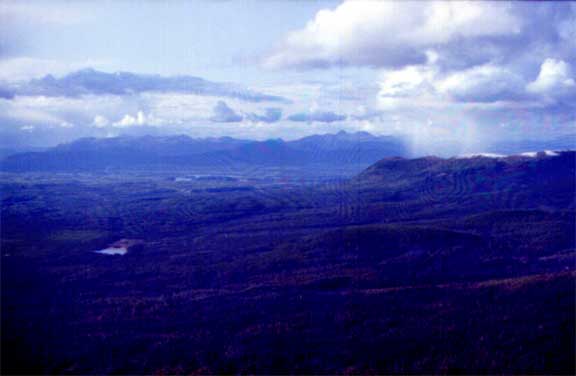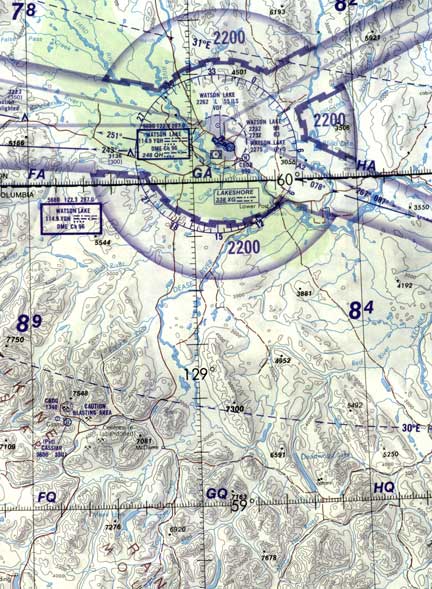Hello Timothy,
I received an e-mail from Herb Daum connecting me to your web site and was able to
enjoy the pictures of the flights you made over Cassiar where I spent an "interesting"
12 months back in 1970 during the four years that I spent in Canada. I have never
forgotten that wonderful place and particularly the strength of the people and their
ability to survive in an environment which most people have never experienced or
could even imagine! Thank you for sharing these pictures. However I have another
reason for this unrequested contact and this is from my wife, Heather who is studying
for a teaching certificate and one of her projects is the history of flying. She
has at this moment gone off to a local naval air station to research their archives.
I hope you are able to provide some information for her but would add that she has
to hand her project in for marking by Wednesday this coming week, so time is short
and I appreciate you are a busy person but would be grateful if you can spare a few
moments. I will end my e-mail here and hand over to Heather, many thanks,
Stuart Briggs
# I am currently studying for a Certificate in Education at Exeter University/Yeovil
College in the west of England and studying the curriculum into the Private Pilots
License and Joint Aviation Authorities to see why and how it has come into being,
the influences that make people take it up etc.. It
would be wonderful to have your comments to see how and why you started flying. What
were the necessary qualifications needed, the continual updates to fly and the
costs involved. The influences and restrictions that you have occurred that will
give me a comparison to our systems in England. heatherbriggs@btinternet.com
many thanks for any help or advise you can provide,
Heather Briggs
Thanks, Tim. I browsed some of your many articles on planes. I am not a pilot,
but while exploring the Cassiar area for minerals, we chartered Beavers and Cessna
185s, sometimes a Supercub, almost weekly in the summer season from B.C. - Yukon
Airways for 16 years, in 1960s and 1970s. One summer, my assistant and I flew almost
25000 miles on various trips. We set out 2-man prospecting parties, with packdogs,
on various lakes in northern BC and southern Yukon and supplied them by air every
2 weeks. In 1961 Sheldon Luck came out of retirement and flew out of Watson. On
one trip we flew into Chuckachida Lake, about 150 miles south of Cassiar. It was
rather small for a Beaver, so on the return flight we taxied as far downwind as we
could and while turning around, the pontoons stuck in the mud of the lake bottom.
Sheldon got out of the plane into the water up to his waste, pushed it into deeper
water, then got in, soaking wet and took off. He was a wonderful pilot -- flying
a Beaver was sort of recreation for him!
Before Cassiar, as a geologist examining deposits out of Vancouver, I flew in a Canso
out of Sandspit on the Queen Charlottes to Prince Rupert. It was interesting taking
off on wheels and landing in the ocean, with the waves just outside of the window
seat.
We also used Beavers on wheel-skis off the ice of Good Hope Lake north of Cassiar
when staking claims with snowshoes in the winter, when we had to watch out for "overflow"
and sometimes cut spruce branches and make a pad for the plane to run up onto so
the skis did not freeze onto the snow. Many interesting adventures related to flying.
I enjoyed it all, especially in retrospect.
Bill Plumb
The early bush flyers were pioneers. By my time, flying was still rather primitive,
without
GIS and cell phones. We depended a lot on the experience and expertise of the pilots.
There are a lot of small lakes in that country, as you know, and the pilots had to
circle each one and see which way the wind was coming from before landing. BC-Yukon
had an excellent pilot called Bob Harrison who flew us a lot. Theywould sometimes
tell us " we can land on that one, but you had better hike to that nearby lake
for pickup" -- sometimes a ten mile walk. We loved the Beaver. It was a bit
overpowered, so we could often take a bigger load because he had used up some of
his gas getting to us. They also used 10-gal gas cans and set out caches on certain
lakes for emergencies, although sometimes the bears got into them.
Re overflow: We flew a crew into Letain Lake about 80 miles east of Dease Lake and
while unloading the Beaver it iced in. Bob tied a rope to the tail and about six
of us on the ground pulled on the rope alternately right and left as Bob used full
power and finally we freed it, so he took off and flew back to Watson with the rope
trailing behind. We. course, on the ground were nearly bowled over with the backlash
from the prop. Ingenuity was needed all the time.
Bill Plumb
I just had to write to you and thank you for sharing those pictures of Cassiar.
I lived there when I was a teenager in 1959-1964. I know exactly what you mean about
the days being rather "short". To look at those pictures and see how we
were totally surrounded by mountains made me realize how vunerable we were! I felt
rather protected by those glorious mountains. I remember beautiful starlit evenings
and the silence. It was a wonderfull content feeling. Especially at Christmas time.
Those were wonderful years for me.
I thank you for bringing them to our attention. To me, looking at those pictures
was a precious gift of beautiful memories.
Sincerely,
Eileen Babcock (Orr)
I have just logged on to your website having been referred by Herb Daum, who
runs the Cassiar website. I just love the photos and they bring back wonderful memories
for me. I was a resident of Cassiar from 1977 to it's closure in 1992. It was always
the country that kept me there and your photos stir the longing to return. I will
bookmark your website and return when I need to be uplifted by the scenery once again.
Best wishes and many thanks for your wonderful images.
Christine Ball



 Yes Bill, I
realise I moved pretty quickly through the stuff on the asbestos. So many people
are completely unaware of this development and the subsequent result of shutting
down a mining town.
Yes Bill, I
realise I moved pretty quickly through the stuff on the asbestos. So many people
are completely unaware of this development and the subsequent result of shutting
down a mining town.